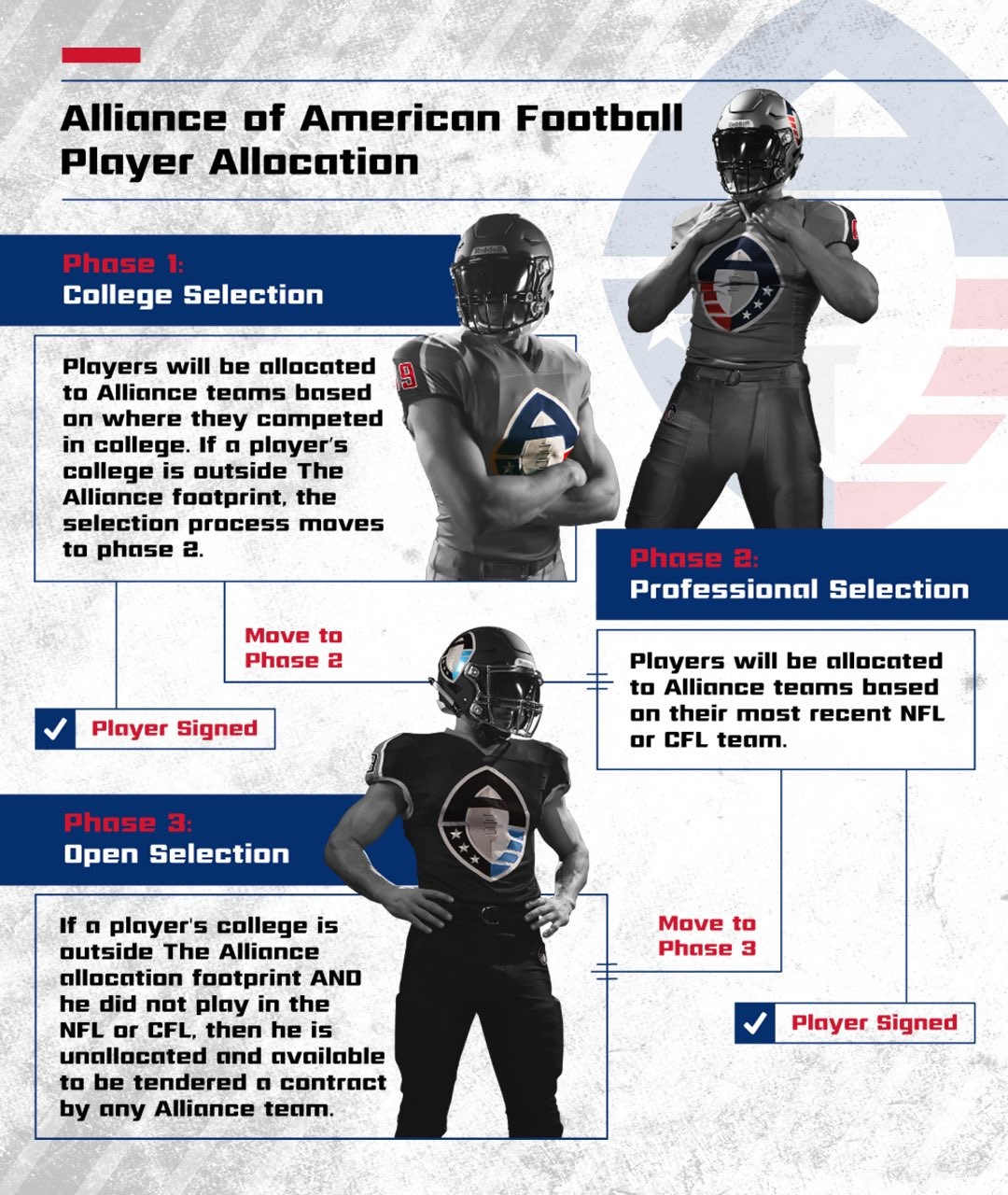When the Alliance of American Football makes its first snap next February, there could be lots of familiar names playing for each of the eight teams, including some that have appeared in the Canadian Football League.

Makes sense, too, because a brand new league needs as many hooks to attract fans as it can find. The Alliance is going with a geographic allocation system that takes advantage of where players attended college, or where they performed in the NFL or CFL.
READ MORE: Rick Zamperin: Sports wouldn’t exist without the fans
For example, if former Alabama standout running back Trent Richardson opts to join the Alliance, he would be placed on Birmingham’s roster. Players who attended Arizona or Arizona State would wind up with the Phoenix franchise. Anyone who played for one of the major Florida schools would be placed with the Orlando team.
“We think this will disperse the talent in a way that will be logical,” said Bill Polian, whose work as an NFL personnel man with Buffalo, Carolina and Indianapolis got him voted into the Pro Football Hall of Fame. “We borrowed that from the USFL.”
Polian, Alliance CEO Charlie Ebersol and the other league founders hope to be far more successful and have more longevity than that league, which lasted three seasons in the 1980s before folding.
Unquestionably, players to fill out the 75-man rosters – other franchises will be in San Diego, Memphis, Salt Lake City, San Antonio and Atlanta – are available. Now, the Alliance has a system for distributing them, particularly once NFL teams make their roster cuts at the beginning of September.
Basically, players from any schools in the SEC, ACC and Pac-12 power conferences will wind up with a franchise in their region. Polian says because the Alliance has no markets in Big Ten and Big 12 areas, “we left them largely unallocated.” Players from such schools as Penn State or Kansas State likely will be apportioned based on which NFL club cut them. But the league plans to distribute four NFL teams’ cuts to each of the Alliance squads.
READ MORE: Toronto Argonauts quarterback Ricky Ray will miss ‘significant time’ due to neck injury
“In addition, we gave each team a CFL team, again based on rough geography,” Polian says.
“The West CFL teams would go to the West Alliance teams.”
Each CFL team has been paired with one of the eight AAF teams: Edmonton Eskimos with Phoenix; Calgary Stampeders with Salt Lake; B.C. Lions with with San Diego; Saskatchewan Roughriders with San Antonio; Winnipeg Blue Bombers with Memphis; Hamilton Tiger-Cats with Orlando; Toronto Argonauts with Atlanta, and both the Montreal Alouettes and Ottawa Redblacks with Birmingham.
“When a player is cut or he is not in the NFL or CFL, the first thing is we look for a college affiliation. His rights are your property if he is affiliated with one of your colleges.
If his college is not assigned, we go to his pro team. If the NFL team does not work, and he is in the CFL, we go to that. Finally, if he is completely unallocated, he can be put on rights list first-come, first-serve.”
READ MORE: Canadian Nathan Shepherd picked in 3rd round of NFL draft
Most smaller schools have not been allocated, nor have any from the lower levels of college ball.
Should a player draw interest from an NFL club after being cut in September and allocated to an Alliance team, he would be free to return to the NFL. But not once the Alliance begins play the weekend after the Super Bowl.
“They can go at any time except from the start of our training camp to our championship game,” said Polian, whose league will play a 10-game season, with four teams making the playoffs.
“The reason we set our calendar the way we did, our season ends just as OTAs are beginning (in the NFL). They won’t miss a heck of a lot, if anything at all, and they will be in shape in late April. They can go right back to the NFL and not miss a beat.”
READ MORE: University of Calgary developing handheld concussion sensor for sideline use
Or they could head back to college. The Alliance will be offering players post-secondary education assistance, as well as health and wellness benefits.
“In addition,” Polian explains “every player completing a full (Alliance) season will receive a scholarship of a significant amount of money and we will provide counselling if they want to go back to school.”
Each player will be signed to a three-year contract with a minimum base gross salary of $250,000 over three years. But they can earn more.
“With bonuses related to skill, statistical levels and even some fan engagement, they can earn considerably more than their base minimum,” Polian said.
“We think it’s very competitive and a decent wage for basically a 10-game season.”
READ MORE: NFL players file grievance over league’s anthem policy
Now that the Alliance has established how it will distribute players and has scheduled scouting combines for August for players not in NFL camps, the next big step comes Sept. 1: cutdown day in the NFL.
“The large push will come at the cut to 53 when a great many players will come on the market,” Polian says. “Our big challenge will be getting the right players.”
— With files from Karen Bartko, Global News







Comments